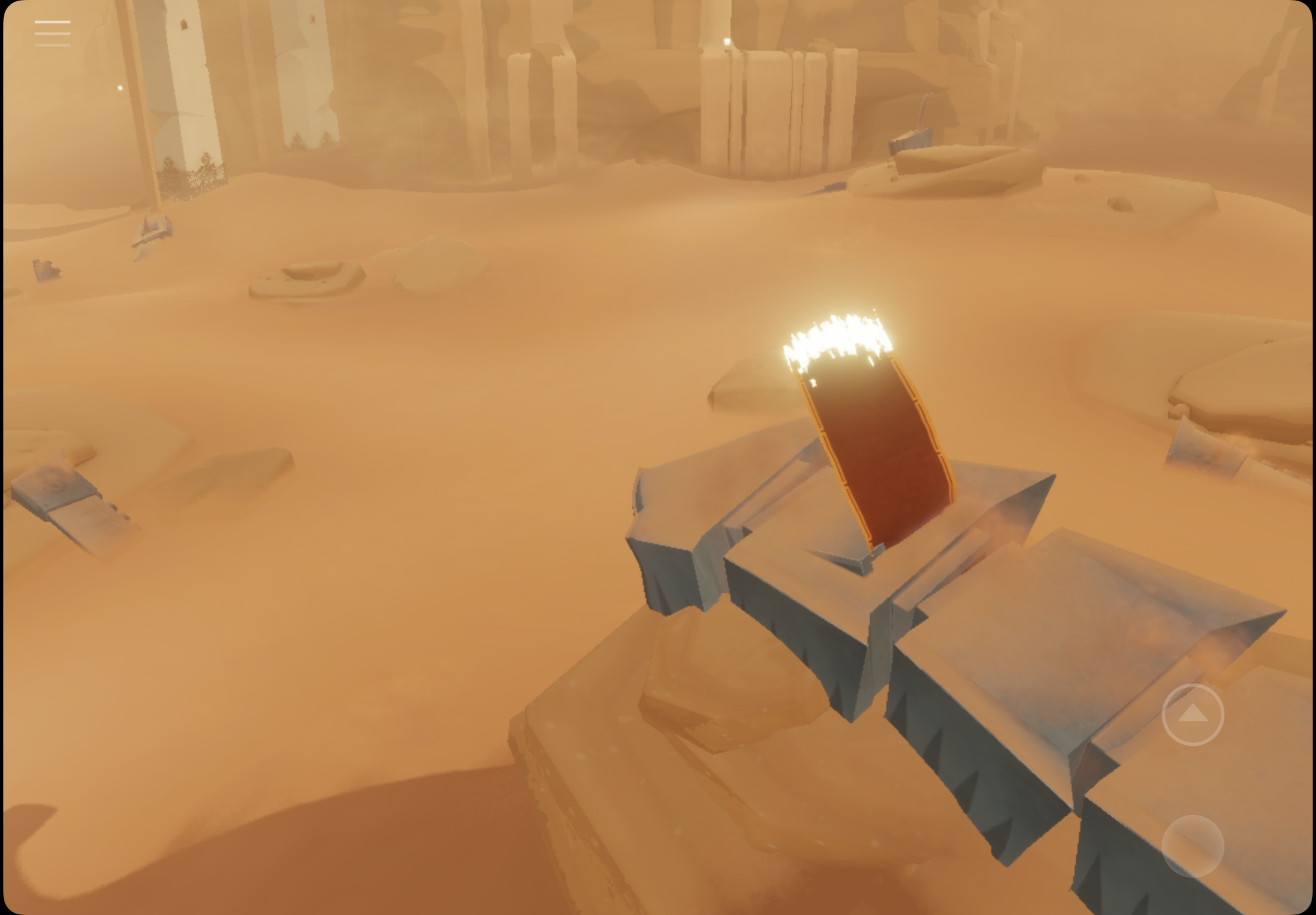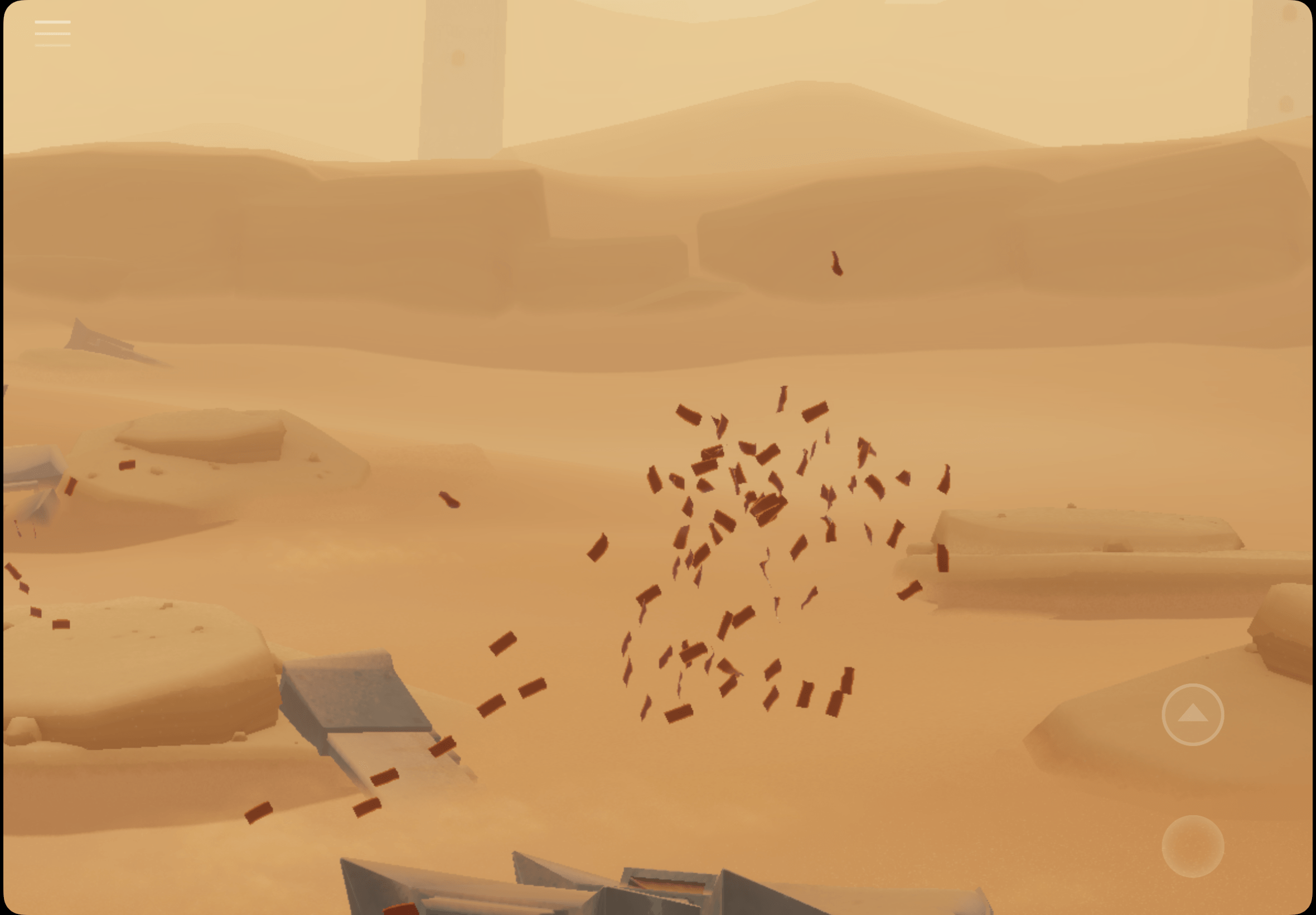For my critical play on walking simulators, I chose to play Journey, a game by Thatgamecompany published for PlayStation 3/4, Windows, and iOS — I played on my iPad. The game is made for a general, casual audience — the game has a low barrier to entry, is not mechanically intensive, and focuses on worldbuilding more than competitive or difficult gameplay, so it appeals to people with little experience with video games.
Formal Elements: The game doesn’t have too many constraints or formal elements — the game is player versus environment, the objective is somewhat unclear (at least where I stopped), but it seems to be exploring the world around you and collecting ribbons. There aren’t really any negative outcomes (once again, at least where I stopped), as you can never really die, but there are positive outcomes when you collect ribbons and activate a new cutscene. The game doesn’t seem to have too many rules either — you can move with the joystick, and you can jump (I think when you have a ribbon collected or something? I’m still not sure exactly when you can jump). There’s also a button that makes you put a symbol over your head and play a musical note — I’m assuming this comes into play later, but I didn’t reach a point where it does anything. Once again, these elements don’t really seem to be there to add a real sense of difficulty/challenge to the game, but rather to simply allow you to interact with the world in more ways. Finally, the game’s boundaries are quite well defined — you’re clearly confined within this mysterious desert world, and control the character with no knowledge of why they’re here or what they’re really trying to do.


Fun Intended/Moments of Success: I think Journey does a fantastic job of captivating the player through Discovery. The game deliberately provides the player with very little information on the world they’re in and the tools they have, so the player is forced to discover the world by walking around and experimenting on their own. For example, the “walking to the top of the ribbons” mechanic (pictured above, except I fell off the ribbon while taking the screenshot) has no explanation — you simply have to find it out yourself by walking up the ribbons and watching the glowing line go up with you. While this takes the player a bit longer than simply telling them what to do with an infographic or sign, it makes it more satisfying in the end, as you feel like you’ve learned something new about the world completely by yourself. The game also emphasizes the importance of Discovery by not cramming all of the gameplay-critical landmarks together — you often have to walk 30-60 seconds between the things that actually matter for progression, and there are often tombs or other unused buildings on the way. While these don’t serve a purpose gameplay-wise (once again, at least not that I’m aware of at the moment), they play an important role in world-building and encourage the player to explore the world around them rather than simply rush to the next landmark.
One thing I did find particularly frustrating was not knowing when I could jump or not. While I generally enjoyed the minimalist approach of the game’s design, I would have appreciated a bit more of an explicit explanation as to when I was able to jump, as messing with movement (my main form of expression in the world) made the game feel clunky and limiting to me. However, I still greatly enjoyed the game overall.



